Snakes in mythology
Snakes have been in religion, mythology, and history since time began.

Adam and Eve is the first story we know  of where a snake is present in the Garden of Eden. In Genesis 3 we read about how Eve was tempted by the serpent who felt that the forbidden tree wouldn’t kill Eve but would open her eyes and be as a god knowing good and evil. After partaking of the succulent fruit her eyes did indeed open and she then encouraged Adam to also partake of the fruit. Soon thereafter they discovered they were naked and got busy creating some clothing out of fig leaves. The serpent in this bible story represented Satan and his desire to thwart God’s plan.
of where a snake is present in the Garden of Eden. In Genesis 3 we read about how Eve was tempted by the serpent who felt that the forbidden tree wouldn’t kill Eve but would open her eyes and be as a god knowing good and evil. After partaking of the succulent fruit her eyes did indeed open and she then encouraged Adam to also partake of the fruit. Soon thereafter they discovered they were naked and got busy creating some clothing out of fig leaves. The serpent in this bible story represented Satan and his desire to thwart God’s plan.
Later in Moses‘s story in Exodus 4:2 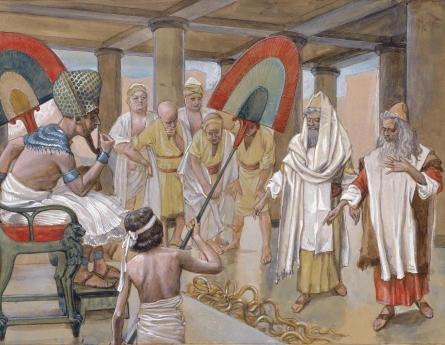 God turned Moses’s staff into a snake and back. Later when Moses and Aaron appeared before the pharaoh Aaron’s staff turned into a snake, the Pharaoh’s sorcerers countered by casting down their own rods and similarly turned them into snakes. Aaron’s snake then proceeded to swallow the sorcerer’s snakes/rod.
God turned Moses’s staff into a snake and back. Later when Moses and Aaron appeared before the pharaoh Aaron’s staff turned into a snake, the Pharaoh’s sorcerers countered by casting down their own rods and similarly turned them into snakes. Aaron’s snake then proceeded to swallow the sorcerer’s snakes/rod.
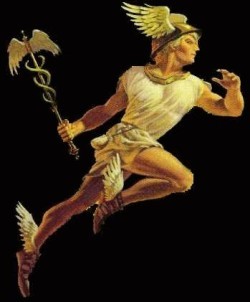 Caduceus or the magic wand of the Greek god Hermes, messenger of the gods, inventor, conductor of dead and protector of merchants and thieves. In the 17 century A.D. Hermes became linked with alchemy. Since the caduceus was the magic staff of Hermes and alchemy it soon became known as the staff of medical profession which was a case of mistaken identity since it actually stood for commerce.
Caduceus or the magic wand of the Greek god Hermes, messenger of the gods, inventor, conductor of dead and protector of merchants and thieves. In the 17 century A.D. Hermes became linked with alchemy. Since the caduceus was the magic staff of Hermes and alchemy it soon became known as the staff of medical profession which was a case of mistaken identity since it actually stood for commerce.
 The Staff of Asclepius is the actual symbol of healing. It is a serpent entwined rod held by the Greek god Asclepius associated with healing and medicine. Since the staff look so similar many mistake them as the same.
The Staff of Asclepius is the actual symbol of healing. It is a serpent entwined rod held by the Greek god Asclepius associated with healing and medicine. Since the staff look so similar many mistake them as the same.
 Medusa was a monster in Greek mythology. She is one of the Gorgon sisters and the only mortal daughter of Phorkys and Keto. Once a beauty with golden hair and fair skin served as a priestess of Athena she was devoted to a life of celibacy but she fell for Poseidon and married him. Athena punished Mudusa by turning each golden lock of hair into a venomous snake, her eyes turn in blood shot orbs, and her creamy skin turned a greenish tinge. Knowing she was repulsive she fled to Africa where she wandered dropping young snakes from her head which is how Africa became a hotbed of venomous reptiles. She turned whomever she gazed upon into stone. Deliverance came to her as death, by the hands of Perseus.
Medusa was a monster in Greek mythology. She is one of the Gorgon sisters and the only mortal daughter of Phorkys and Keto. Once a beauty with golden hair and fair skin served as a priestess of Athena she was devoted to a life of celibacy but she fell for Poseidon and married him. Athena punished Mudusa by turning each golden lock of hair into a venomous snake, her eyes turn in blood shot orbs, and her creamy skin turned a greenish tinge. Knowing she was repulsive she fled to Africa where she wandered dropping young snakes from her head which is how Africa became a hotbed of venomous reptiles. She turned whomever she gazed upon into stone. Deliverance came to her as death, by the hands of Perseus.
 Snakes in movies are a commonplace. Who can forget the Harry Potter films where snakes are a common theme. It started in the first film when Harry talks to and mistakenly releases the friendly snake from the zoo. Then we meet the huge Basilisk that haunted the halls of Hogwarts. Later we find out their is a snake language called Parseltongue, which is a rare ability, where humans can talk to snakes. Finally we meet Nagini who is Voldemort’s pet snake who was actually a horcrux.
Snakes in movies are a commonplace. Who can forget the Harry Potter films where snakes are a common theme. It started in the first film when Harry talks to and mistakenly releases the friendly snake from the zoo. Then we meet the huge Basilisk that haunted the halls of Hogwarts. Later we find out their is a snake language called Parseltongue, which is a rare ability, where humans can talk to snakes. Finally we meet Nagini who is Voldemort’s pet snake who was actually a horcrux.
Snakes are everywhere. Remember Kaa from the Jungle Book?
New 2016 The Jungle Book…creepy
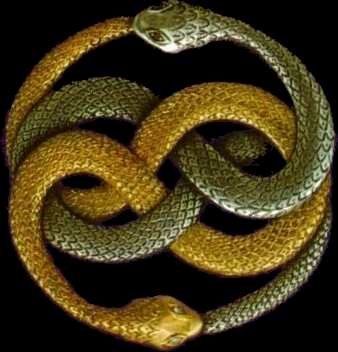 Ouroborus is an ancient Greek symbol depicting a serpent or even a dragon eating it’s own tail. Originated in Egyptian iconography but Ancient Greeks adopted the symbol. It symbolizes introspection, eternal return, or constantly re-creating yourself. Of course it also symbolizes the infinite cycle of nature of creation and destruction or life and death.
Ouroborus is an ancient Greek symbol depicting a serpent or even a dragon eating it’s own tail. Originated in Egyptian iconography but Ancient Greeks adopted the symbol. It symbolizes introspection, eternal return, or constantly re-creating yourself. Of course it also symbolizes the infinite cycle of nature of creation and destruction or life and death.
The first known appearance is in the Book of the Netherworld which is an ancient Egyptian Funerary text in the tomb of Tutankhamen in 14th century B.C.
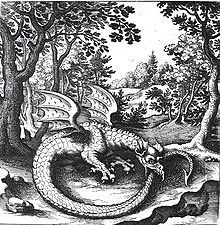 In Norse mythology the ouroboros is the serpent “Jörmungandr, one of the three children of Loki and Angrboda, which grew so large that it could encircle the world and grasp its tail in its teeth.”
In Norse mythology the ouroboros is the serpent “Jörmungandr, one of the three children of Loki and Angrboda, which grew so large that it could encircle the world and grasp its tail in its teeth.”
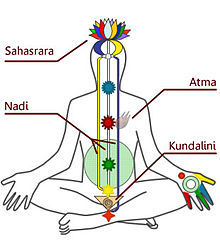 In India the ouroboros is used to describe Kundalini energy. “Different spiritual traditions teach methods of “awakening” kundalini for the purpose of reaching spiritual enlightenment.[1] Kundalini is described as lying “coiled” at the base of the spine, represented as either a goddess or sleeping serpent waiting to be awakened.”
In India the ouroboros is used to describe Kundalini energy. “Different spiritual traditions teach methods of “awakening” kundalini for the purpose of reaching spiritual enlightenment.[1] Kundalini is described as lying “coiled” at the base of the spine, represented as either a goddess or sleeping serpent waiting to be awakened.”
Any way you look at it snakes are interesting, creepy, have a slithering stronghold through history.
Save
Save
Save
Save
Save
Save
Save
Save
Save
Save
Save
Save



